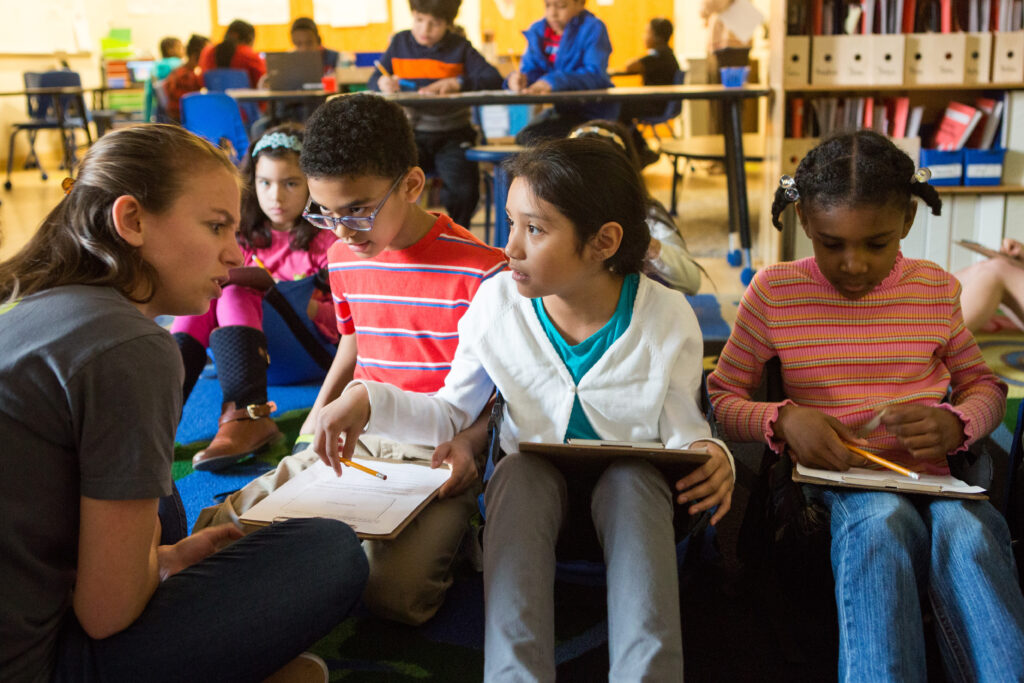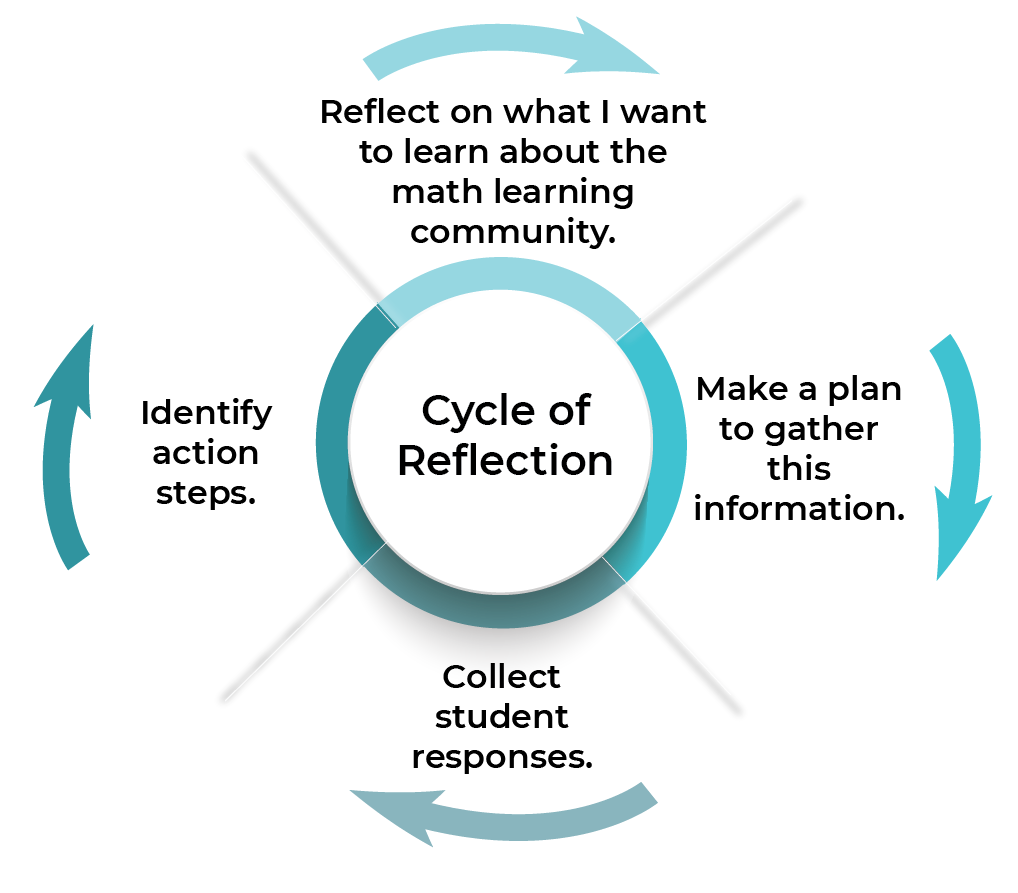How Student Reflection Helped Two Teachers Learn about Their Students
by Marta Garcia and Annie Sussman
November 1, 2023

In a previous blog, A Cycle of Reflection: Learning More About Our Students, we wrote about how our work with a group of teachers resulted in a tool for student reflection. In the course of field testing the tool, and offering feedback on it, those teachers shared stories from their classrooms, capturing the impact of consistently asking students about their experiences as math learners, and reflecting on what they learned. These teachers found that setting aside time for their students to reflect contributed to a culture that was built on trust, honest feedback, and open communication. One of the areas the tool helps teachers focus on is Students’ Reflections on Themselves as Math Learners. One way it does this is by providing questions about the role of mistakes and habits related to perseverance. Many of the teachers in the group were interested in gathering information about their students’ beliefs in this area.
Lucille, a third-grade teacher, and Carolyn, a fifth-grade teacher, were both interested in learning about how their students persevered in math class, and what they could do to support them when they needed help. They asked their students to reflect on the following prompts from the tool:
When I need help, I want the teacher to__________________.
When I need help, I don’t want the teacher to_____________.
Lucille
I was surprised to learn that overall, my students felt strongly about not being told “the answer.” Many students wrote about how helpful it is to hear the directions or the problem read aloud, and how helpful it is to be able to work with a partner while trying to figure out challenging work. One student wrote about the importance of having time to process the information and another wrote that listening to other students’ ideas “helps me unstuck myself.” After reflecting on my students’ responses, I [am] left wondering how this idea of seeing mathematics as an opportunity to persevere when something feels challenging would or would not show up in their descriptions of what makes a good math student. [I plan to] ask the follow-up question: What makes a good math student?
Carolyn
[I learned from the responses that my] students want to do their own problem solving and critical thinking as opposed to just be given answers to their work. My next step from these responses is to empower students to make mistakes and feel challenged. I want to continue to integrate more growth mindset work throughout the school year as opposed to just at the beginning. I will use rich tasks and problems with no/multiple answers to get students to embrace struggle and identify struggle as an opportunity for their brain to grow as opposed to only having negative connotations with mistakes.
Lucille and Carolyn each identified specific action steps based on what they learned from students’ responses. Lucille decided to investigate whether students believed that perseverance was one of the traits of a “good” math student. Carolyn wanted to empower students by incorporating growth mindset work throughout the school year. She was also interested in finding ways to help her students see struggle in mathematics as an opportunity for growth by providing lots of opportunities to engage in rich and challenging math tasks.
Both teachers continued to move through cycles of reflection over the course of the school year as they worked towards their goal of supporting student perseverance. Each cycle of reflection yielded new information that informed their teaching and raised new questions to investigate further. At the end of the school year, both teachers took time to reflect on the power of this work:
Lucille
I really appreciate that my kids have been [so] honest with me in their reflections … Through these reflections I saw I had some kids who were feeling things I didn’t realize they were feeling and that allowed me to either spend additional time with them in helping them find their comfort zone, or give some further questioning, or even to pull them in to build them up to show them what they are doing … It’s been super powerful.
Carolyn
I think that a big pillar in antiracist teaching is knowing our students … Student reflection helps us see our students—who they think they are as learners and who they think they are as mathematicians. I think being able to know our students on a deep level and allowing our students to advocate for their own support, and their own goals and their own learning …[is] just so empowering. We haven’t had anything like [this reflection tool in math] before …. I feel like we made so much progress in the one-to-one talking and the confidence they have in sharing their ideas with me. It still hasn’t quite transferred to that small group or partner work that I’m looking for, but I’m still going to keep at it.
Each of these teachers’ stories offers us a window into the complicated and important work in which they were engaged. Their experiences capture the process of choosing a goal, selecting questions to pose (for the whole class and/or for individual students), analyzing the responses and then taking action based on what they learn. This cycle of reflection can inform one’s teaching practice and result in a more equitable learning community for all.

Note: This is the final blog in a 4-part series on student reflection. Read the first, second, and third blogs in the series.
References
Garcia, M. & Sussman, A. (2023, October 25). A Cycle of Reflection: Learning More About Our Students. Math Equity Forum Blog.
The Math Equity Forum at TERC. (2023, October). Student Reflection Tool: Getting to Know Your Students. Forum for Equity in Elementary Mathematics.

Search for related blog posts
